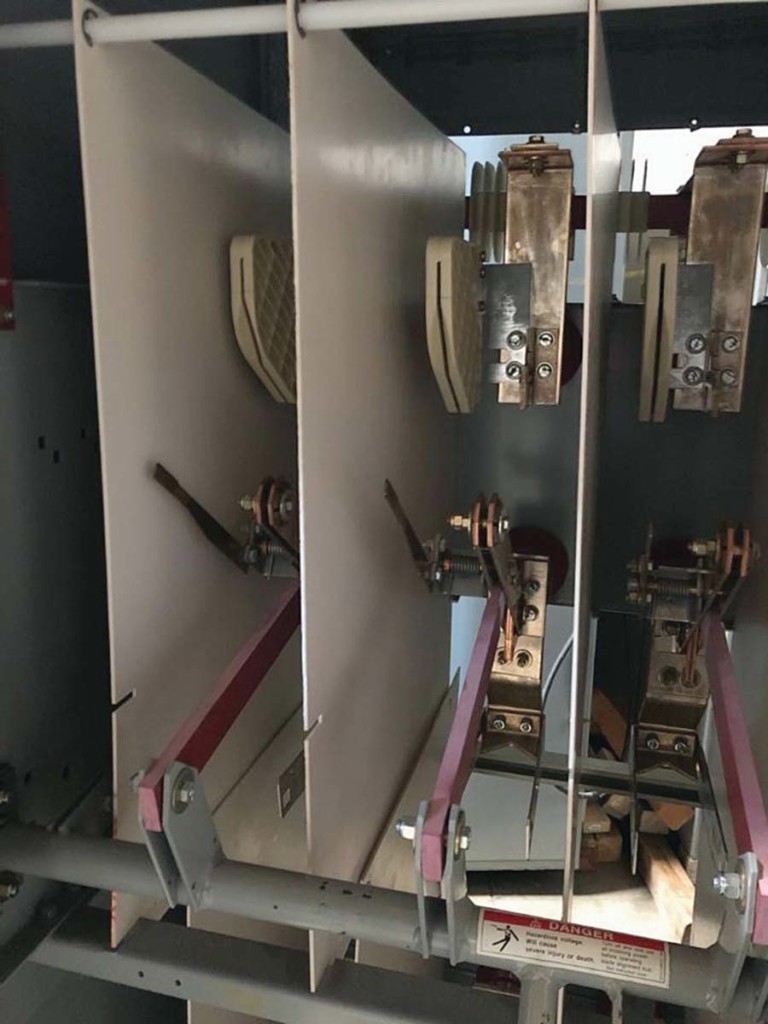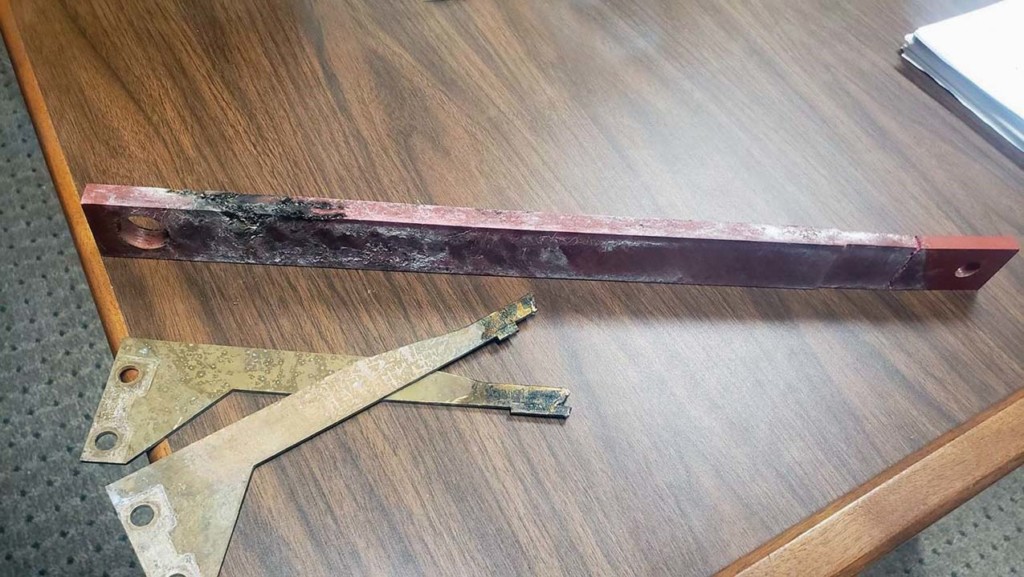I was awakened by a phone call at 3:30AM on a recent Saturday morning and somehow cleared my voice well enough for the customer to understand we would mobilize a technician ASAP to troubleshoot flooding at one of his campus buildings. By 4:15AM, our technician was on site with campus electricians discussing a situation involving the physical education building at one of the most famous universities in the western United States. The building was still energized, but from the steps leading to the basement electrical room, it was clear that perhaps a foot of water was present and additional water was leaking onto the dual 5kV load interrupter switches (LIS). It was immediately apparent the water leak could cause a flashover at any time and local switching or even stepping into the water would be extremely dangerous.
By 6:30AM, switching permissions were granted and executed from other locations on the incoming medium-voltage circuit loops so the building’s equipment sources were safely de-energized. Sump pumps powered from a temporary generator began to slurp the electrical room water down quickly. The overhead leak flow began to diminish as well. Temporary lighting was soon in place, inspections were underway, and additional technician support arrived to assess the overall damage. Other equipment in the room was unscathed, but there was substantial damage to one of the LIS. As one of the technicians broke free to give me an update, he climbed the steps, went outside, and exclaimed, “The pool is empty! OMG, it’s only about 1/3 full!” I tried to envision the majestic pool where Greg Louganis gracefully twirled in the air on his diving descents in the 1984 Summer Olympic Games being nearly empty. We immediately understood where the water in the basement was coming from.
Load interrupter switches provide a reliable and economical means of switching and isolation often used for transformers in unit substation applications. These medium-voltage switches generally consist of incoming cable bus landings, the switch element itself, fuses, and outgoing jumper cables or bus. The switch element consists of main and arcing contacts plus an arc-quenching assembly. The switch is manually operated from outside of the metal clad enclosure. As the switch is opened, the main contacts open first, leaving the arcing contacts to operate next to interrupt the current with the assistance of springs to accelerate contact travel and provide a consistent break. During the closing operation, the arcing contacts engage first, closely followed by the main contacts.

Load Interrupter Switch Interior
The damage to the primary source LIS included substantial insulation tracking damage to the operating arm (red bar at top) that could not be repaired in the field; in addition, the operating arm was fractured when the switch was opened. Two of the arcing contacts (bottom) were also damaged.

Damage to Primary LIS
Clearly, the immediate water entrance may have caused some tracking damage, but there was substantial existing damage — and that damage might have caused injury or catastrophic failure if it had been operated under load. Additionally, the broken operating arm would have left one phase energized, causing a potentially dangerous condition.
Technicians thoroughly cleaned and lubricated the alternate source switch, and after insulation tests were successful, the alternate source switch was re-energized successfully and the parts from the damaged switch, now out of service, were obtained for a future repair outage. The building was back online by 12:30pm.
Several common failure modes have been noted during many years of testing and performing preventive maintenance on LIS:
- Tracking on an insulation barrier if they are touching or very close to energized components

Tracking on Insulation Barrier
- Tracking and erosion of the operating arm insulation from long-term partial discharge activity accelerated by dust contamination and high humidity
- Damage to the arcing contact blade including fracture of the arcing contact tip from the body of the arcing contact
- Internal damage to the arc quenching device.
Conclusion
Although this particular adventure was a bit unusual, reliable power to the building was restored in an efficient manner by taking a step back and analyzing the situation carefully before beginning. Inspection showed that lack of maintenance could have placed campus electricians in danger if they had attempted to open the switch. Facility managers must understand and appreciate the need to maintain their equipment. Hopefully, this example better illustrates why.
 Don A. Genutis presently serves as President of Halco Testing Services, Inc., a NETA Accredited Company with offices in Los Angeles and Houston. He has held various principal positions during his 35-plus year career in the electrical testing field, primarily focused on advancing no-outage testing techniques for the last 20 years, with emphasis on cable and switchgear on-line partial discharge testing techniques. Early in his career, Don acquired and operated the former Westinghouse East Pittsburgh Insulation Research Laboratory, where he gained valuable experience in understanding insulation material performance. Don holds a BS in electrical engineering from Carnegie Mellon University and is a NETA Certified Technician. Don has authored 50 technical articles for NETA World and has been featured in EC&M and Uptime magazines. Don’s work is summarized in his book, Partial Discharge & Other No-Outage Testing Methods, published in 2019.
Don A. Genutis presently serves as President of Halco Testing Services, Inc., a NETA Accredited Company with offices in Los Angeles and Houston. He has held various principal positions during his 35-plus year career in the electrical testing field, primarily focused on advancing no-outage testing techniques for the last 20 years, with emphasis on cable and switchgear on-line partial discharge testing techniques. Early in his career, Don acquired and operated the former Westinghouse East Pittsburgh Insulation Research Laboratory, where he gained valuable experience in understanding insulation material performance. Don holds a BS in electrical engineering from Carnegie Mellon University and is a NETA Certified Technician. Don has authored 50 technical articles for NETA World and has been featured in EC&M and Uptime magazines. Don’s work is summarized in his book, Partial Discharge & Other No-Outage Testing Methods, published in 2019.
